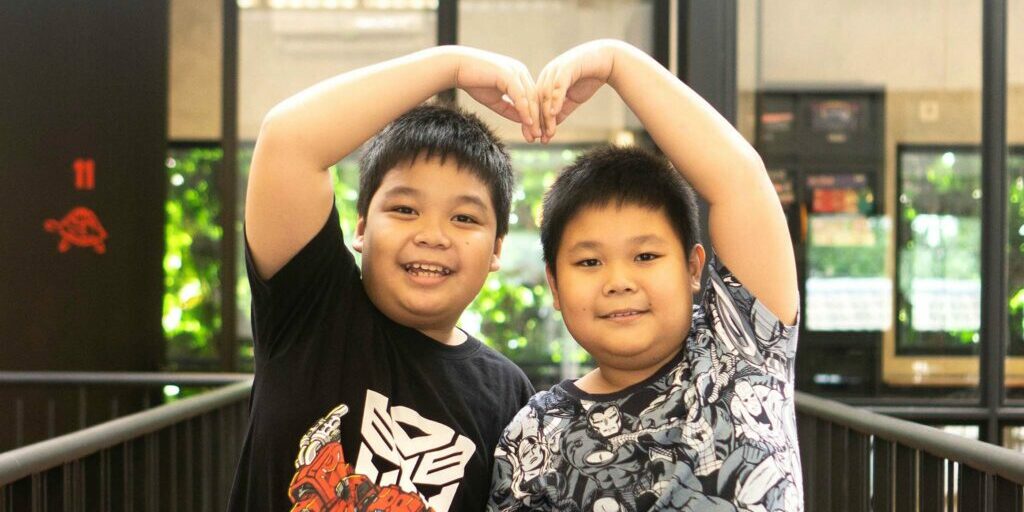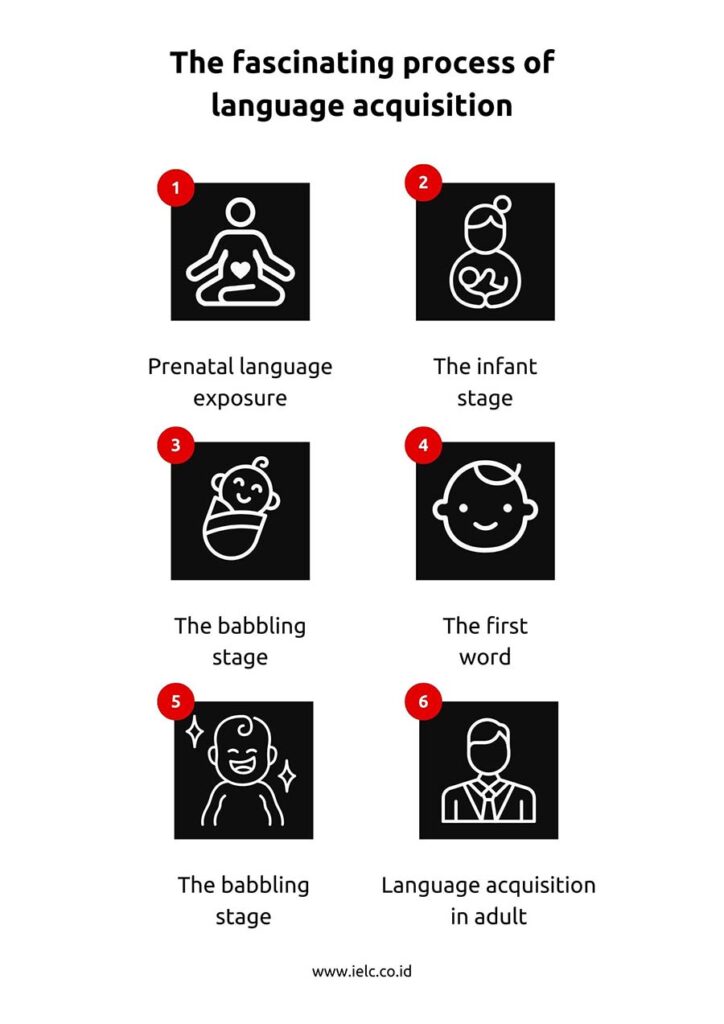
The fascinating process of language acquisition: from babble to banter
Welcome, learners!
Have you ever thought of how embarking on the journey of language acquisition is one of the most natural yet complex adventures we undertake as humans?
Think about it: we start by just listening to sounds before we’re even born, and then we grow up to talk and share stories. This journey from baby babble to full-on conversations is packed with interesting steps!
In this blog, we’re going to walk through the exciting stages of learning how to talk, from the first baby sounds to putting words together and even picking up new languages as grown-ups. Each step is crucial as it shows just how smart and adaptable we are as humans!
So, come along as we break down how we go from simple sounds to sharing our thoughts and stories, how kids can switch between languages without missing a beat, and what happens when adults decide to learn a new language!
So, come along as we explore the journey of language learning and acquisition together! This exploration is more than a scientific inquiry; it’s a journey into the heart of what makes us human—our innate need to connect, understand, and be understood.

1. Prenatal language exposure
Remarkably, the language learning process begins even before a child is born!
Around the 30-week mark of pregnancy, infants can already detect and respond to sound waves through the amniotic fluid. This experience is likened to hearing sounds underwater, where specific words may not be discernible, but the overall rhythm and intonation patterns of speech are.
This early exposure is crucial as it introduces the infant to the rhythmic and intonational aspects of their native language(s), setting a foundational stage for later detailed language learning.
2. The infant stage
Right from the get-go, after they’ve arrived into the world, babies seem to have a special ear for the sounds of people talking, more than any other noises! it’s like they’re already tuned into the world of language!
What’s really heartwarming is that they have a soft spot for the voice of the person who carried them. It’s as if they’re saying, “Hey, I know you! You’ve been talking to me all this time!”
They even lean towards the languages that were spoken around them before they were born, showing us how those early sounds they heard while cozy in the womb start shaping their understanding of language from day one!
The way babies pick up language is extremely fascinating! One important step in picking up a language to distinguish and respond to different sounds and words. One of the methods researchers use to understand this process is called high-amplitude sucking, where how babies suck on a pacifier can actually tell us if they’re tuned in or zoning out when they hear sounds. This neat method shows us that babies can actually spot the difference in sounds like “ba ba ba” switching to “pa pa pa”!
3. The babbling stage
Before babies can articulate their first meaningful words, they need to develop the necessary fine motor skills to control their mouth and tongue. The babbling stage is a crucial period where infants experiment with these motor capabilities, learning to produce a variety of sounds.
Babbling typically consists of long, repetitive sequences of syllables, such as “ba-ba-ba” or “da-da-da.” This stage is not just random noise-making; it represents infants’ active engagement with their vocal or gestural abilities, allowing them to practice the phonemes (sound units) of their language!
Interestingly, the babbling stage is not exclusive to spoken languages. Babies exposed to signed languages also go through a similar phase, known as “manual babbling,” where they produce repetitive hand movements that resemble the signs they observe around them.
This parallel between spoken and signed languages underscores the universality of the babbling stage in language acquisition, highlighting the innate human capacity for linguistic expression, whether vocal or gestural!
4. The first word
Children typically start to say their first real word at around the age of one, but it’s not a one-size-fits-all kind of deal! Every child is unique! Some might start saying their first real words a bit sooner, some a bit later, and that’s totally okay! It all depends on their own pace and their environments!
The first words that children tend to use are usually simple and comprise easy-to-produce syllables. Words like “mama,” “dada,” “baba,” and similar variations are common across various languages. These first words usually have to do with the people and things they know and love right in their own little world, showing just how much chatting with them and being close makes a big difference in their early steps into language!
The encouragement from parents and other adults really matter when it comes to the first words a child picks up! Every time a little one manages to say “mama” or “papa” and gets a joyful reaction, it boosts their confidence to try more words. This creates a positive cycle, where each attempt at speech is met with happiness and praise, making those early words stick and encouraging the budding speaker to keep going!
The emergence of first words signifies a major leap in cognitive and linguistic abilities. It indicates that the child has started to understand the symbolic nature of language, where specific sounds are associated with particular meanings. This moment is just the beginning, paving the way for a burst in new words and the start of putting together more complicated sentences as they grow!
5. Language acquisition in children
Children are born with a natural talent for picking up languages, a skill that’s wired into our very makeup as humans! The cool thing is, children don’t learn and internalise the rules of language through memorization, rather, they do it by engaging with the language actively and intuitively.
There was an experiment involving children whose native language is English, called the wug test. In this experiment, children are shown a picture of a fictional creature called a “wug.” Then, they are shown another picture with two of these creatures and are asked what they are called. Most children response that it’s called “wugs”, demonstrating that the they have applied the pluralization rule of adding an “s” to make a singular noun plural, even though they have never encountered the word before.
The fact that children can take these rules and use them for words they’ve never heard before means they’re not just echoing back what they’ve heard. Instead, they are able to understand and apply grammatical rules, such as pluralization, to words they have never heard before, showing a deep understanding of language structure.
The findings from the wug test and similar experiments suggest that children’s language acquisition involves the internalization of linguistic rules, which they can then apply to new situations. This counters the idea that children learn language purely through imitation and highlights the cognitive processes involved in language learning.
This knack for applying general rules is key to how chilren grow their language skills, helping them quickly expand their vocabulary and get better at communicating. It really highlights how children aren’t just passively soaking up words; they’re actively engaging with the language around them, piecing together a sophisticated grasp of how language is put together!
6. Language acquisition in adults
In contrast to children, adults have the advantage of already knowing at least one language, which can be a big help when picking up a new one. This background in language can make it easier to grasp new grammar and words.
However, it’s a bit of a double-edged sword. While adults can use their existing language skills to help learn a new one, they also face a unique challenge that kids often dodge, especially those growing up in bilingual settings. Kids can soak up more than one language at a time pretty smoothly, without getting them mixed up. Adults, on the other hand, might find bits of their first language sneaking into the new one they’re learning. This can lead to a bit of grammar mix-up or an accent in the new language – which, by the way, is totally normal and just part of the learning curve!
For adult learners, motivation plays a crucial role. Adults tend to excel in picking up a new language when it resonates with their personal passions, objectives, and sense of self. For example, a keen interest in enjoying movies, music, or books in the new language, or the desire to chat with native speakers, can greatly enhance how effectively they learn.
Adults have access to a broader range of cognitive strategies, such as analytical thinking and metacognitive skills, which they can apply to language learning. They can study grammar rules explicitly and use various memorization techniques, leveraging their matured cognitive abilities. However, this often means that language learning for adults is more effortful and less intuitive than for children.
Despite the challenges, diving into a new language as an adult is incredibly rewarding and absolutely worth the effort. It’s a journey that offers rich rewards for personal growth and career opportunities. Not only can it polish your resume and open doors in global job markets, but it also fosters better communication in diverse workplaces.
Learning a new language goes beyond practical benefits; it’s a gateway to deeper connections with various cultures. It enriches travel experiences, offers new insights into world literature and media, and cultivates a deeper appreciation for the richness of cultural differences.
Beyond these cultural and professional advantages, the mental workout of learning a new language brings significant cognitive perks. It can sharpen your memory, enhance your problem-solving abilities, and might even keep age-related cognitive decline like dementia at bay.
And let’s not overlook the personal triumphs. Tackling the complexities of a new language and reaching milestones like fluency can be a profound source of pride and a real boost to your confidence!
Pssssttt…. we can help! Give us a call or WhatsApp to ask how we can help you achieve your English learning goals!
At IELC, we teach English the right way
Our goal is to get you speaking in English with fluency and confidence as fast as possible. We want to give you the skills you need to fulfil your potential!
Our experienced teachers will guide you along every step of the learning process to ensure that you are not wasting your time, money, and energy on useless language exercises & wrong methods.
Our courses
With our modern campus and technology, we are equipped to provide the best possible courses for children, teens, and adults, including:
Online and on campus IELTS courses
Online and on campus TOEFL PBT courses
Online and on campus TOEFL iBT courses
We offer our classes in group classes or private classes.
No matter what your goals are, our team will help you achieve these goals by providing you with Indonesia’s best English courses!
Talk to our team today to get your FREE consultation and take your first step towards success.
Sincerely,

IELC Academic Director
